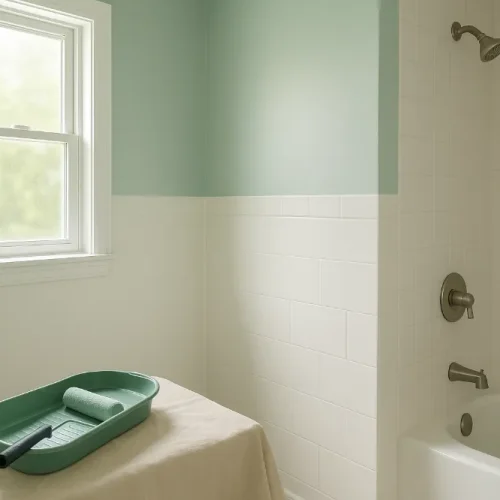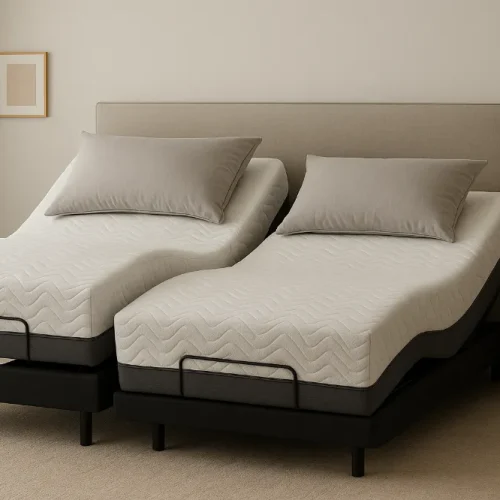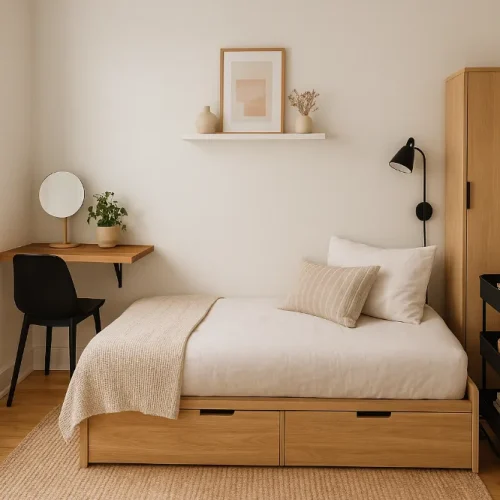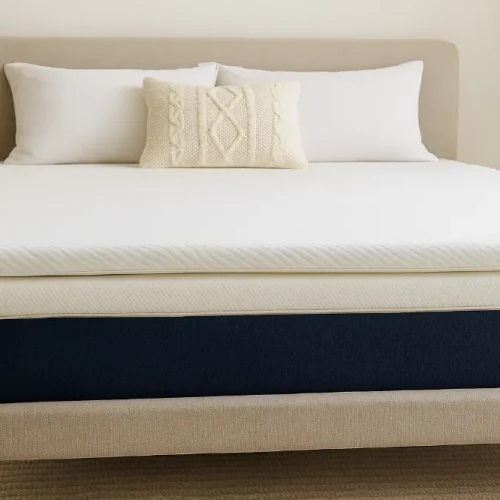Sharing a bed is one of those things people assume should be simple. Two people, one mattress, end of story. But if you’ve ever slept beside someone whose comfort preferences are the total opposite of yours, you already know it’s not that easy. One person runs hot, the other freezes. One loves the plush sink of a cloud-like mattress, the other needs firm, sturdy support to keep their back from complaining in the morning. Someone shifts around like a restless golden retriever, while their partner sleeps like a statue but wakes up at every movement. Modern couples joke about “sleep incompatibility,” but it’s a real thing and an uncomfortable one if not addressed properly.
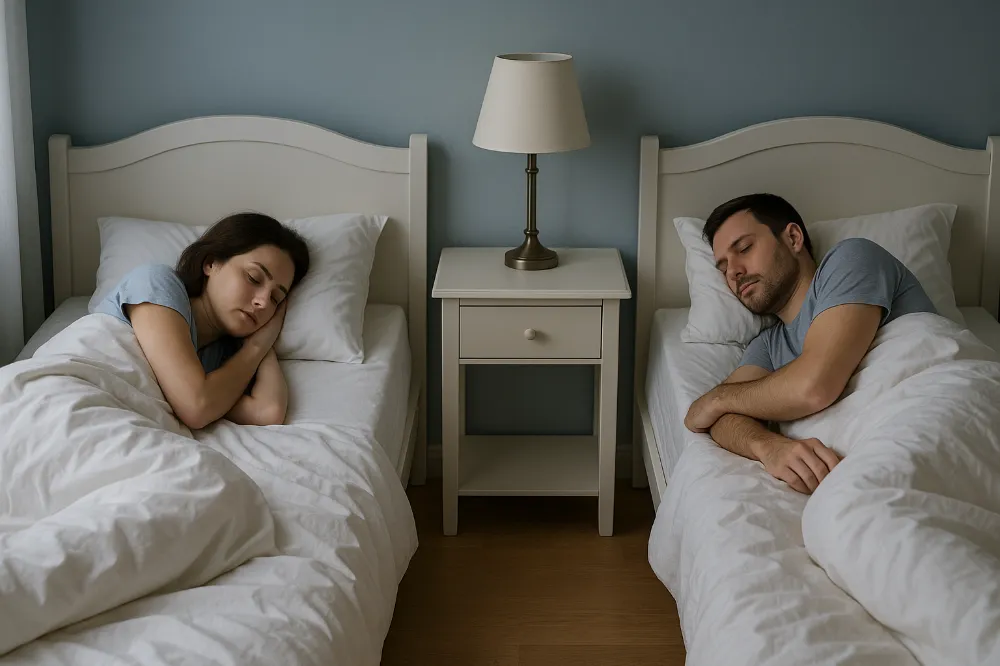
The good news? Sleep science, bedding innovations, and smart bedroom strategies have come a long way. Today’s couples have more options than ever for creating a shared sleep environment that respects both partners’ comfort needs. Instead of settling for lukewarm compromises or suffering through sleepless nights, you can design a setup that’s tailored, intentional, and genuinely supportive of how each person’s body works. This article dives deeply into the most effective sleep solutions for couples who don’t share the same comfort preferences. Whether the issue is temperature, firmness, motion, snoring, or sleeping positions, there’s a workable solution that keeps both people rested and still sleeping together in the same bed.
Understanding the Real Source of Sleep Mismatches
Most couples think they’re just “incompatible sleepers,” but the issues usually fall into predictable categories. Identifying the root of the discomfort makes solutions far easier to find:
Temperature Differences:
This is the most common mismatch. Warm sleepers generate a lot of body heat, while cold sleepers lose heat quickly or prefer a cozier feel. Studies from the National Institutes of Health reinforce how body temperature impacts overall sleep quality and sleep cycles.
Firmness Needs:
Body types matter. Heavier bodies generally need firmer support to avoid sinking deeply into the mattress. Lighter bodies often prefer something softer that contours without swallowing them. Old injuries or chronic pain can also shape someone’s firmness preference.
Sleep Positions:
Side sleepers typically need more pressure relief. Back and stomach sleepers need more support. If one partner is a committed side sleeper and the other is a stomach sleeper, they may never agree on the “right” mattress feel.
Motion Disturbance:
If one person tosses and turns, the other feels every movement on a mattress with poor motion isolation.
Snoring or Medical Needs:
Conditions like sleep apnea, chronic snoring, acid reflux, or circulation issues can affect sleep posture needs sometimes requiring elevation or more adjustability.
Lifestyle Schedules:
Early birds and night owls often disrupt each other. Different work shifts make it even tougher. Understanding these dimensions makes it easier to build a sleep system that adapts to both partners instead of forcing a one-size-fits-all solution.
Solution 1: Split King Setups for Maximum Personalization
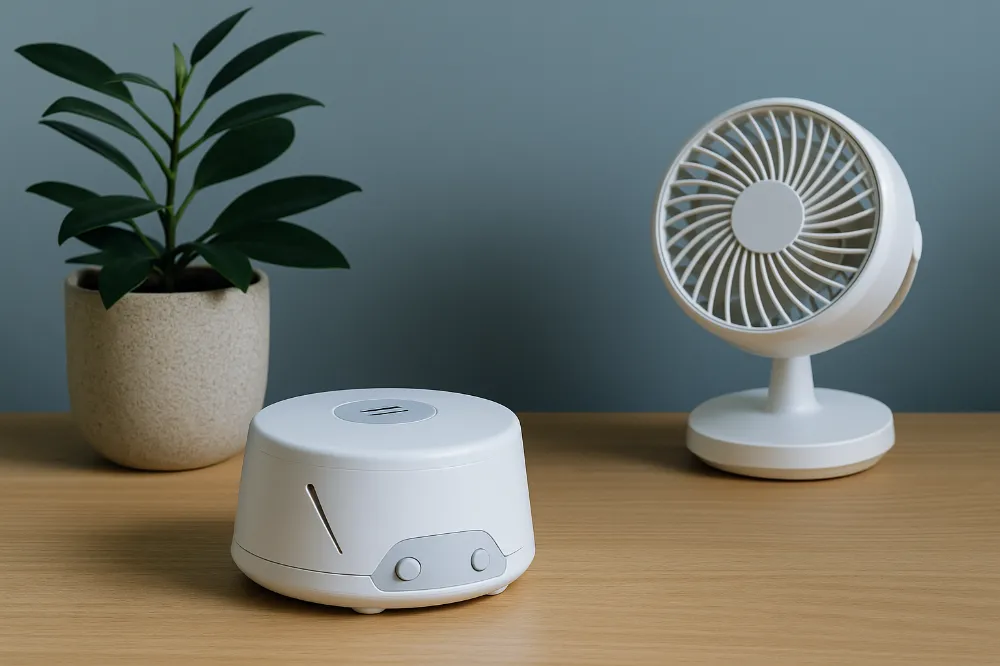
For couples with significantly different comfort needs, split setups offer a simple truth: each person gets their own sleep surface without giving up the shared bed experience. A split king is essentially two Twin XL mattresses placed side-by-side on a single frame. Together, they match the size of a traditional king but they allow each partner to choose their preferred firmness, mattress type, and in many cases, independent adjustability.
Why couples love split setups:
- Each person chooses their own mattress firmness
- Movement on one side doesn’t affect the other
- Ideal for adjustable bases
- Bedding can still look unified with king-size layering
For couples dealing with wildly different sleeping habits hot vs. cold sleepers, firmness disagreements, medical needs this setup is transformative. What surprises people most is that the bed doesn’t feel “separated.” Modern mattresses push tightly together, and a single comforter hides the split entirely.
Solution 2: Adjustable Bases for Independent Sleep Positions
Adjustable bases used to be associated only with medical environments, but today they’re quiet, sleek, and built for comfort. Many couples choose them because adjustable positions can instantly solve issues that mattresses alone cannot address. If one partner snores, needs head elevation for acid reflux, or prefers a slight incline, an adjustable base offers personalized angles. And snoring isn’t just an annoyance according to the U.S. National Library of Medicine, snoring can be linked to airway resistance and sleep apnea. With a split king adjustable base, each Twin XL section moves independently. One person can elevate the head, while the other can stay completely flat.
Benefits include:
- Better circulation
- Pressure relief
- Snoring reduction
- Support for back or hip discomfort
- Zero-gravity settings for full-body relaxation
Even couples who agree on firmness often still appreciate the custom angles an adjustable base provides.
Solution 3: Hybrid Mattresses The Middle Ground for Most Couples
Some couples don’t want separate mattresses but still need something flexible enough to support diverse comfort preferences. Hybrid mattresses offer that perfect middle ground. A hybrid combines supportive coils with memory foam or latex layers. This design brings the best of both worlds: pressure relief plus bounce and airflow.
Benefits:
- Great motion isolation
- Excellent temperature regulation
- Balanced support and contouring
- Works for all sleep positions
Hybrids are especially helpful for couples with different body weights, since the coil base prevents one partner from sagging into the other’s space.
Solution 4: Mattress Toppers for Fine-Tuning Comfort
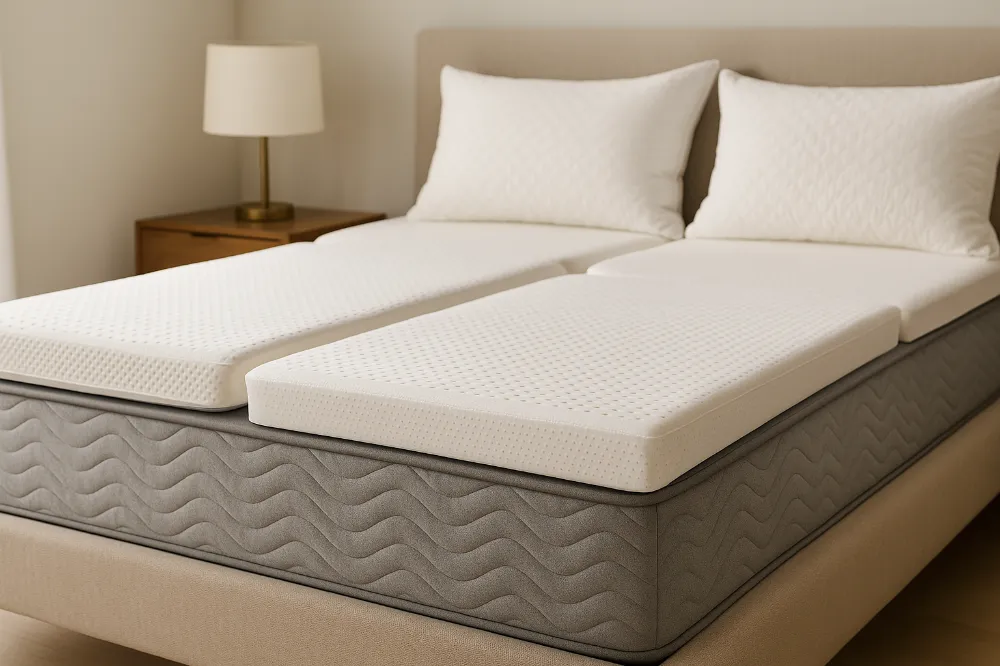
Not every couple needs to start over with a brand-new mattress. Sometimes the core mattress works well, but one person needs extra softness or firmness. That’s where mattress toppers come in. Soft toppers help side sleepers reduce pressure on shoulders and hips. Firmer toppers can stabilize a too-soft mattress for stomach or back sleepers. Split toppers are also available, giving each partner a different feel while keeping the bed visually unified. This solution is ideal for couples who mostly agree on firmness but need subtle adjustments.
Solution 5: Temperature Balancing A Quiet But Critical Factor
Temperature differences create more nighttime frustration than most couples realize. But temperature is one of the easiest sleep issues to fix.
For hot sleepers:
- Cooling gel or graphite-infused foam
- Latex mattresses for natural airflow
- Tencel, bamboo, or percale sheets
- Cooling mattress pads
For cold sleepers:
- Flannel sheets
- Higher-insulation duvets
- Heated blankets
Dual-zone bedding allows each partner to maintain their preferred temperature without compromise. Some couples also use two separate duvets a common practice in Scandinavia to eliminate blanket tug-of-war.
Solution 6: Motion Isolation for Restless Sleepers
Movement is one of the biggest enemies of sleep quality in couples. If one partner tosses and turns, the other suffers. Modern mattresses excel at reducing motion transfer, especially:
- Memory foam
- Latex
- Hybrids with pocketed coils
If your partner is a restless sleeper, choosing a mattress designed with motion isolation is essential. For extreme cases, a split king solves the issue completely.
Solution 7: Unified Bedding Aesthetics Without Losing Personal Comfort
Couples often worry that individual mattresses or split toppers will look messy. But today’s bedding design choices make it easy to maintain a clean, unified aesthetic.
Some strategies include:
- A single king-size duvet
- Coordinated sheet colors
- A shared bedspread for daytime styling
- Matching pillow shams
- A decorative throw across the foot of the bed
This way, each partner keeps their personalized setup hidden underneath, while the bed looks cohesive and stylish.
Solution 8: Communication and Sleep Agreements
This may sound simple, but communication solves many comfort issues before they escalate. Couples rarely discuss the details of what disrupts their sleep. Instead, they silently tolerate discomfort or assume their partner won’t understand.
A “sleep agreement” can help. It’s not formal just an understanding of what each person needs, such as:
- Separate blankets
- Specific room temperatures
- Permission to adjust their half of an adjustable base at any time
- Noise accommodations like white noise or earplugs
The more open the conversation, the faster the solutions emerge.
Solution 9: Lifestyle and Routine Adjustments
Not every sleep problem requires new furniture. Sometimes it’s about habits and environmental factors.
For couples with different schedules:
- Use blackout curtains
- Replace loud alarms with vibrating or silent alarms
- Establish separate winding-down routines
- Choose warm lighting during evenings
For noise sensitivity:
- White noise machines
- Fans
- Soft background soundscapes
For snoring:
- Head elevation
- Humidifiers
- Specialty pillows
- Medical evaluation if persistent
These adjustments can dramatically improve harmony in the bedroom.
Solution 10: When Separate Sleeping Arrangements Make Sense
While most couples find relief with modern sleep solutions, a few may eventually explore separate beds or separate rooms. This is often called a “sleep divorce,” although it doesn’t reflect emotional distance. In reality, better sleep can strengthen a relationship rather than weaken it. Still, many couples discover they don’t need to consider separate sleeping spaces once they implement split setups, temperature balancing, motion isolation, or adjustable bases.
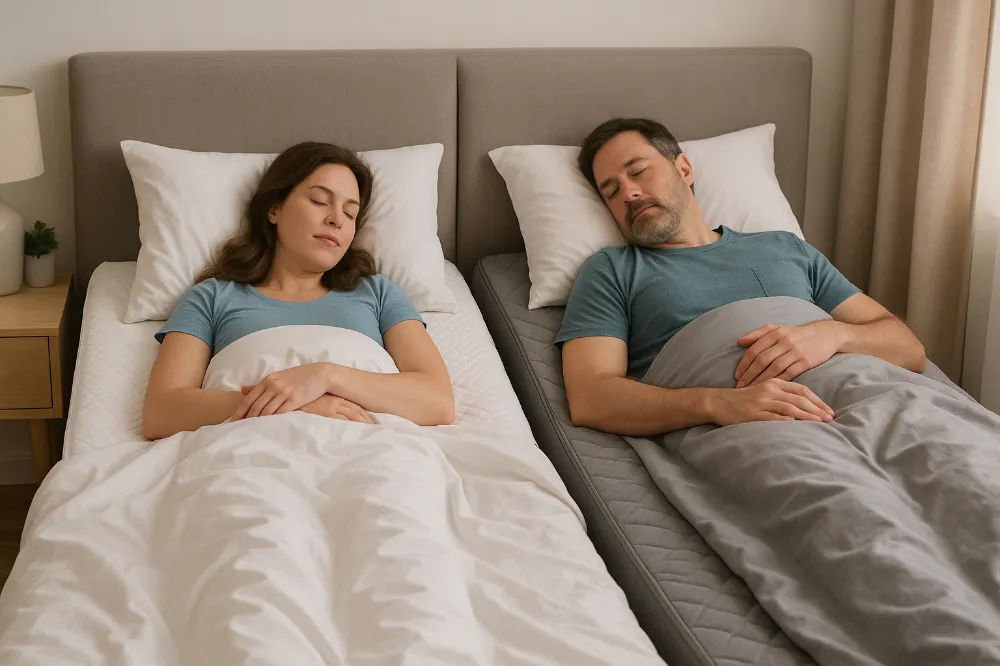
Final Thoughts
The biggest misconception about shared sleep is the belief that both people must enjoy the bed the same way. That was never true. Bodies differ. Sleep styles differ. Comfort needs differ. Instead of “compromising,” couples can now personalize sleep without sacrificing closeness. The modern bedroom allows individuality and intimacy to coexist beautifully.
When both people sleep well, everything improves energy, patience, communication, mood, and overall quality of life. Crafting a personalized sleep system is one of the most meaningful investments a couple can make, not just in comfort but in the health of their relationship. Better sleep builds better connection. And with today’s sleep solutions, every couple, no matter how mismatched their habits may seem, can finally enjoy peaceful nights together.
FAQs
A split king setup is usually the best option because each partner gets their ideal firmness without compromise.
Dual-zone bedding, cooling sheets, or using separate duvets allow each partner to maintain their preferred sleep temperature.
Not really. With the right frame and bedding, most couples report that it feels unified while still offering personalized comfort.
Choose mattresses with strong motion isolation like memory foam, latex, or hybrids with pocketed coils.
Yes. Elevating the head on an adjustable base often reduces snoring and helps alleviate acid reflux symptoms.
Use a split king or add individualized mattress toppers to adjust each side without changing the entire mattress.
Absolutely. Differences in body type, sleep style, and medical needs make varied preferences completely normal.
Split king sheet sets, which include two Twin XL fitted sheets and one king flat sheet, keep each side secure.
Yes. A single king-size duvet or decorative bedspread can create a unified look while hiding individual layers underneath.
Only when all other comfort solutions fail and sleep quality significantly affects health or relationship well-being.


